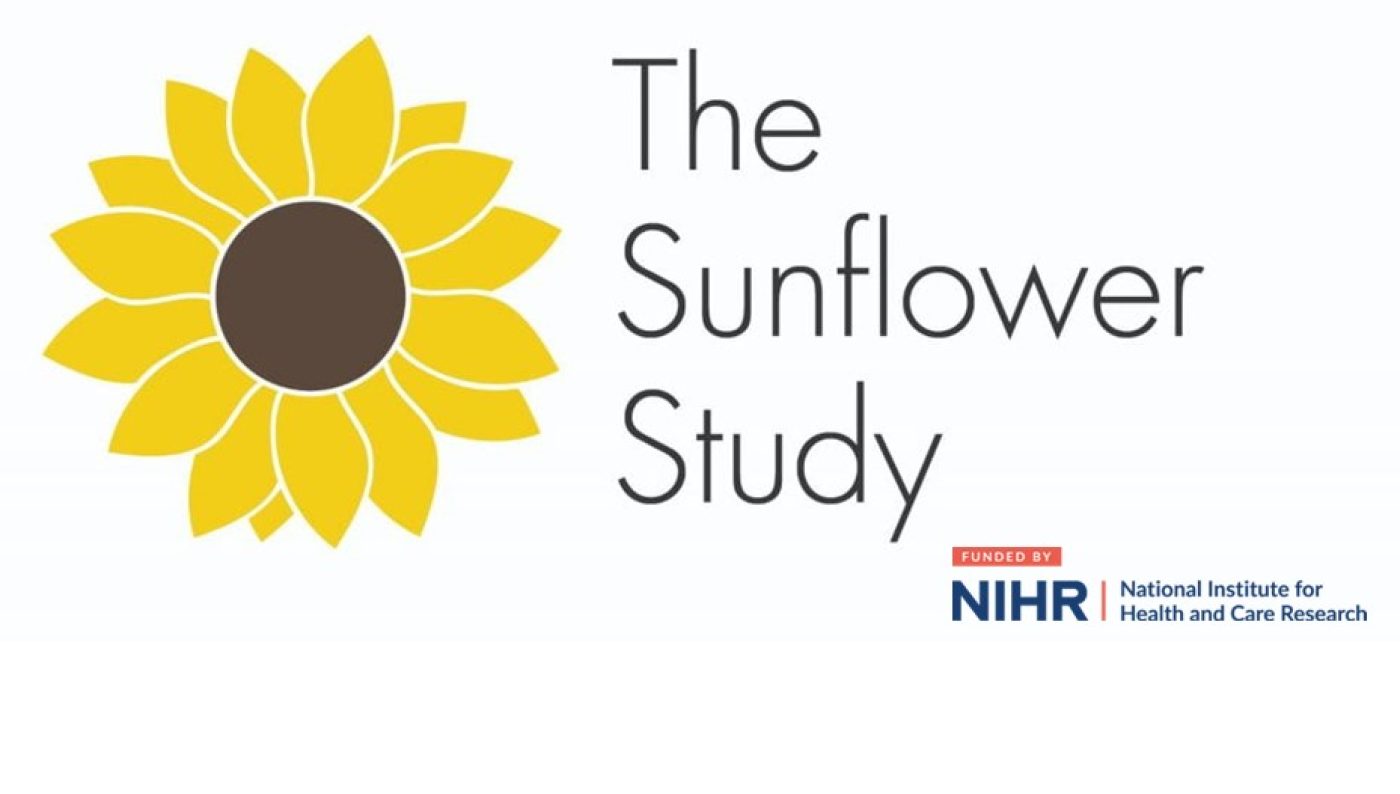Frequently Asked Questions for patients, relatives and the public
Why has this study come about?
The Sunflower Study is the result of a response to a funding call put out by the National Institute for Health Research. They asked for researchers to put together a study looking at how cost effective routine imaging of the common bile duct was in patients planned for gallbladder removal surgery (laparoscopic cholecystectomy) at low/medium risk of common bile duct stones.
Around 70,000 gallbladder removal procedures take place each year in England. There is uncertainty amongst surgeons as to whether or not, in low/medium risk patients, further tests to look for common bile duct stones are necessary. As a result, some surgeons choose to perform the test and others don’t. A robust study is required to establish which approach leads to the best outcomes for patients and is most cost effective.
The results from the Sunflower Study will shape the future care of patients at low/medium risk of common bile duct stones who are undergoing gallbladder removal surgery.
Is this study ethical?
The study protocol and supporting documents will be reviewed and approved by the funding body, the National Institute for Health Research (NIHR), and by an independent Research Ethics Committee (REC) who consider the need for the research and weigh up the risk and benefit for patients.
All research studies run in the NHS are conducted in accordance with the UK Policy Framework for Health and Social Care Research and relevant legislation. The Health Research Authority (HRA) provides ethical review of proposed research through NHS RECs who scrutinise applications and put the rights, safety, dignity and well-being of research participants at the centre of their decision making.
NHS RECs consist of up to 18 members, a third of whom are lay (this means their main professional interest is not in a research area, nor are they a registered healthcare professional). They safeguard the rights, safety, dignity and well-being of research participants, independently of research sponsors. They review applications for research and give an opinion about the proposed participant involvement and whether the research is ethical.
Why can’t you compare data on patients who currently have one or the other treatment?
The only way to measure the true effectiveness of imaging of the common bile duct is to create two groups, where patients in one group are randomly assigned to receive imaging of the common bile duct prior to their surgery and patients in the other group are randomly assigned to not receive imaging of the common bile duct prior to their surgery. This allows the two approaches to be compared in the same type of patients with similar characteristics (age, sex, medical history etc.). If we were to simply compare data from everyday records, this would not be a fair comparison of the two alternatives and might give misleading results.
Why do you need so many patients to decide which treatment is better?
The Sunflower Study is looking to compare the proportion of patients experiencing a gallstone related complication following their gallbladder removal surgery (laparoscopic cholecystectomy), whether they had imaging of their common bile duct before surgery or did not. From our preliminary work, we found that 5-10 in every hundred (5-10%) of patients would routinely be expected to experience a gallstone related complication following their gallbladder removal surgery. In order to prove that patients not receiving the imaging of their common bile duct before surgery do not experience more gallstone related complications following their gallbladder removal surgery than patients that do receive imaging of their common bile duct before surgery, the study believe that the risks of experiencing a gallstone related complication should be within 1.5% of each other between the two groups (e.g 6% risk in one group and 7.5% risk in the other).
There are well established statistical rules to determine how many patients are required to enter a study to be sure that two treatments are as good as each other. However, these statistical rules rely heavily on predetermined assumptions. These rules initially implied that we needed to enrol around 13,600 patients into the study with 4,500 receiving imaging of their common bile duct before surgery and 9,100 not receiving imaging. More patients will not receive the imaging, as this is in line with current figures – around 1/3 of patients routinely receive imaging of their common bile duct before gallbladder removal surgery. However, due to the impact of the COVID-19 pandemic on gallbladder removal surgery, it was found that the risk of our primary outcome was higher than initially hypothesised in our sample size calculations. This means that to answer the primary question of the Sunflower study, we could reduce the number of patients we need to enrol from 13,600 to 5,900. A final sample size of 7,500 has now been decided upon to allow us sufficient power to also allow us to answer our secondary outcome questions successfully. We will achieve these numbers by recruiting patients from over 50 hospitals in the UK in approximately five and a half years.
Can patients opt out of the study?
Patients will be asked whether they would like to participate in the Sunflower Study by their clinician, a research nurse or a surgical trainee. Patients are free to decline to participate in the study, and this will not affect their care. Whether or not patients have imaging of the common bile duct before their gallbladder removal surgery would then be decided by their surgeon.
When will the study start?
The study funding, and the study as a whole, will start in June 2018. Patient recruitment will begin in December 2018 and will last for a period of approximately five and a half years. The study is expected to last for approximately seven and a half years, at which point we will hopefully be able to provide a definitive answer to this important research question. The initial timeframe was extended due to the impact of the COVID-19 pandemic.

